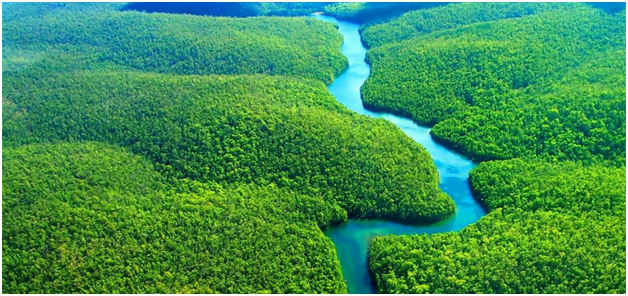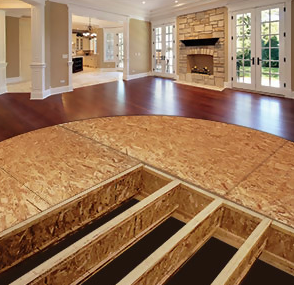There are no other ways but to present to you one of the most important discussions that we can share with you. This article is cut in to three portions so that we can be able to relay to you important points of this topic. As we write this article, we cannot help but empathize and feel not only for the immediate victims but for the entire earth. Imagine destroying your lungs… How can we be able to breathe? That is what the world is experiencing right now…
They are the first to suffer from forest fire
Hold Up! The whole world knows what happened with the Amazon rainforest. Yes, you are right, the world’s largest lung is about to die. Nobody knows what truly transpired with the fire. No one can really pinpoint what is the cause and reason of the catastrophe. All we know is that not only the Amazon rainforest is damaged, but the entire humanity as well.
Some of us might not experience the impact of the increasing wildfire especially in terms of their ferocity and frequency. But the truth of the matter is, they consume forests and destroy lives. Is there a more efficient way to battle them? Could the circular bio-economy aid in saving the dying Amazon?
While it is true that some parts of the world may not feel the impact, slowly, it is getting in to our very nerves in terms of economy and sustenance to the forest’s natural resources.
Wood, for instance is in extreme shortage because of what happened. Not to mention the animals and other plant species that has been in extinction because of wildfire. Mind you, more than 60 percent of the Amazon rainforest has been eradicated in the world map. What was once green in shade can now be seen as grayish charcoal in the satellites and can barely be seen in clear because of smoky sights that somehow transcends loss of life, did you see it?
Animals, for instance and different kinds of species are also damaged and wiped out without express aid. How about the tribes and ethnic groups that settles and wanders throughout the rich forest? How are they going to cope with this disaster?
Well, these are the major points of discussion that can be lingered on not only now, but in the generations of tomorrow. How can fight these occurrences that happen naturally, or intentionally, as we speak? Common fire management practices are equipped with several solutions. Controlled fires which were broadly restricted by colonialist authorities had long been utilized by indigenous and ethnic groups to manage their forests and lands and to secure their group and community from huge scale wildfires.
The next part of this discussion focuses mainly on how the Brazilian Environmental authority has done to battle and cure this endemically natural disaster that cut lives and resources all over the globe. Is there still a way to mend the broken lungs? If there is, how long can we be able to attain its richness and beauty? Will it be on this lifetime?
The first part of this discussion has shown the cause and effects and all the questions that might arise in this phenomenon. This time, we will pay close attention to the meat of this topic. And on how the people, nation, and bodies directly affected by the large-scale wildfires are acting.
In the past few years, the Brazilian Environmental Authority has been working with the aid of ethnic and indigenous peoples. They have been acquiring knowledge from seniors in terms of battling fire, employing ethnic firefighters and putting budget in the application of these best practices on a wide scale. This practice has evolved in to a concrete and stable Fire Management technique with the use of prescribed burns at specific times of the calendar so as to stay away from big scale destruction when the dry and hot wildfire seasons say hello. Common know-how is the framework of all the exercises of prescribed burns in the Amazon territories and is already being practiced in seven Brazilian States namely ROraima, Mato, Grosso do Sul, Grosso, Maranhao, Tocantins, Goias, and of course, the Amazonas. We are speaking of eleven million hectares.
As to this writing, more than sixty percent has been damaged because of large scale wildfires. The construction and furniture industries are crying in terms of shortage. According to statistics, almost fifty five percent of furniture makers and companies all over the globe are getting their supplies and resources in the Brazilian region of the Amazon rainforests. There has been somehow a retard in the production of wooden furniture. On the other hand, construction industries all over the globe, especially in the European region are somehow affected on this.
Hold up! We are only talking on one facet of the problem. And we have yet to tackle the entire economy in terms of other resources which are obtained and acquired in the Amazon rainforest.
Unimaginably, communities across the world will surely struggle in dealing with the increasing impacts of climate change in relation to sustainable development. At this crucial juncture, in our entire humanity, we as a person need to learn, listen, support and respect ethnic traditional knowledge.
Basically, the circular bio-economy is a fast growing approach for more sustainable and industrial development. It is a fusion of twin key sustainability principles. First, it involves utilizing more bio-based and renewable resources for value added items like energy, wooden materials, food and chemicals by utilizing organic waste streams from agriculture and forestry. On the other hand, biodegradable products are taken back to the environment and thereby re-inserting as part of the entire cycle.
By this regard, we can be able to eliminate wildfires even during dry months simply because fires are taken out in the equation. We are to make sure that we make no room for fires. Easier said than done, but it is doable.
The last installment of this discussion is the culmination of the ultimate solution which is bio economy. Let’s continue to read and be educated.
As we have discussed, there were twin key sustainability principles and we still owe you the second one. Well, it keeps those sustainable products and materials in use longer by means or recycling, remanufacturing, sharing and reusing. Instead of throwing them away for sole a sole purpose, might as well make another life out of it. In that regard, we can be able to make the forest be cured in a faster way because we will not need that much. Meaning, we will not also be getting that much. And the end goal is here is for the forest to recover faster than the usual.
In the past article, we asked you if the Amazon can still recover during our lifetime. The answer is yes. And the ultimate solution to that is the most essential part of a circular bio economy which is cascading the utilization of biomass resources. In relation to this, the main purpose of cascading is to enhance resource efficiency by capturing the significant embodied in materials while decreasing demand for fresh primary items and materials. This idea can be efficiently applied to cascading the use of wood items, paper, and a lot more.
Direct burning of rainforest resources, as we have witnessed in Brazil over the last few months, is the direct opposite of cascading utilization. It destroys not only essential natural habitats but is ultimately wasteful and inefficient from an overall foresight. A swift transition in to a circular bio economy could reinforce a strong innovation development and environment of new high value items like food, supplements and wooden products.
Artistic creation of wild fire
But, to be able for Brazil to take advantage from the rich genetic resources of the Amazon rainforest, it will require protocol and policies in order to preserve the biodiversity of the rainforest to be able to make sure functioning ecosystem in using the natural resources in a sustainable development.
For those of you who have been following us for the past months, this is ultimately what we are talking about in terms of sustainable development. Even before the wrath of the Amazon wildfire occurred, we are already talking about sustainable development. If only our discussion reached the persons affected of such disaster, we may have the chance to prevent it or at the very least, minimize the situation.
But the damage has been done. And we are not stopping from here. We should move forward and embrace what can be done to be able to let the Amazon rainforest in the most efficient and fastest possible time. At the end of the day, we want to see that rich green back in to the picture from up above. There is still a solution. We just have to strictly abide by it.
Truly indeed, the Amazon rainforest it the world’s last rich rainforest. It serves as a lung to our habitat. I cannot imagine the world without it. So, while there is still a solution, we contribute in our little own way.





















